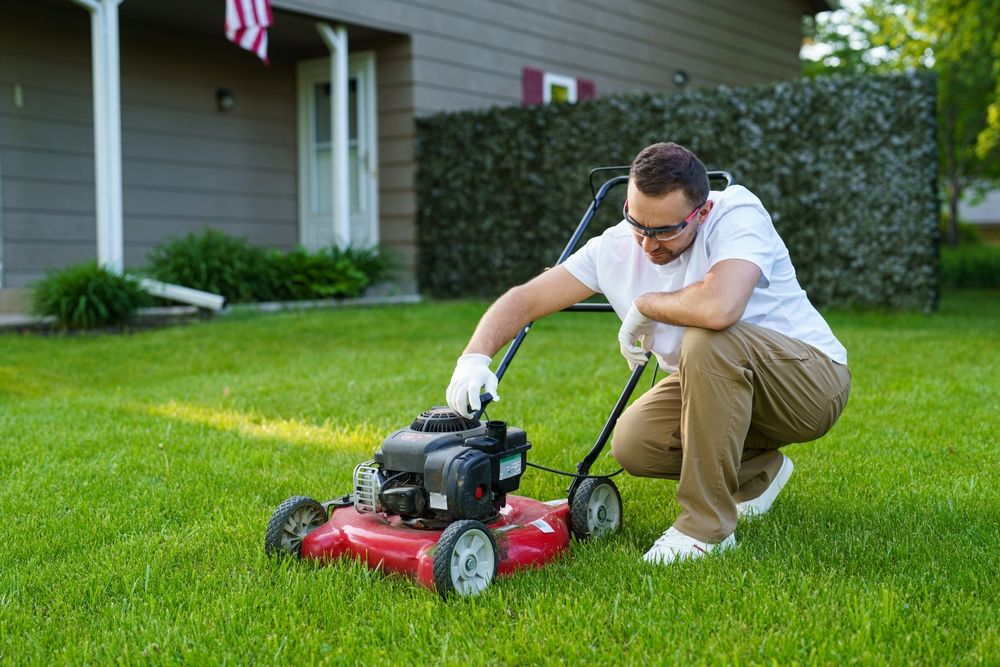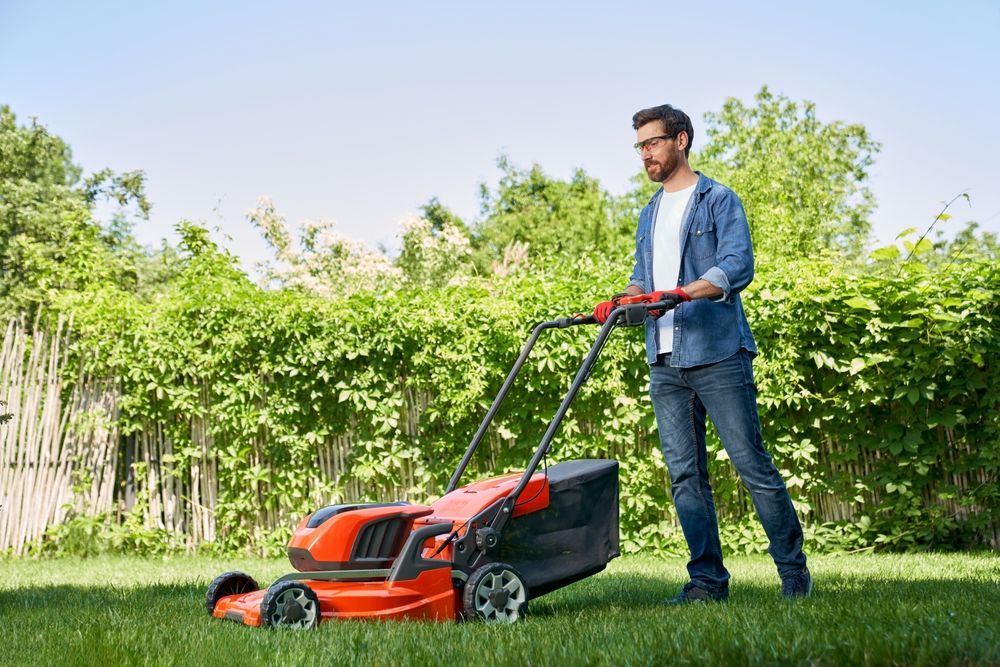For many homeowners, maintaining a neat and healthy lawn is a top priority—but the right lawn mower can make all the difference between a quick, enjoyable trim and a frustrating ordeal. With a myriad of types, cutting widths, power sources, and added features, it can be overwhelming to choose the best mower that suits your yard’s size and terrain. This guide will walk you through key considerations—like lawn dimensions, terrain challenges, maintenance, and budget—so you can find a mower that turns your lawn care routine into a more efficient and pleasurable task.
1. Why the Right Mower Matters
Why It’s Important
An ill-suited mower might stall frequently, leave an uneven cut, or struggle on sloped terrain. Over time, a mismatch can result in wasted energy, time, or unnecessary maintenance costs. Conversely, a well-chosen mower can boost efficiency, reduce physical strain, and lead to a healthier-looking lawn.
Benefits of a Properly Matched Mower
- Better Cut Quality: The right machine effectively deals with grass height and density, ensuring a uniform appearance.
- Time Savings: A machine designed for your yard size can reduce the number of passes needed.
- Less Wear & Tear: Proper power level and design avoid overworking the engine, extending its lifespan.
Takeaway
By considering yard size, type, and personal preference from the outset, you’ll invest in a mower that smoothly matches your lawn’s demands and your own comfort.
2. Determining Your Yard’s Characteristics
Why It Matters
One of the primary factors steering mower choice is the size and layout of your lawn. A small, flat plot might be fully serviced by a basic push mower, while larger or hilly lawns might benefit from self-propelled or riding mowers.
Factors to Evaluate
- Lawn Size:
- Up to ¼ Acre: A push mower (gas or electric) or reel mower could suffice if you don’t mind walking the entire lawn.
- ¼–½ Acre: Might want a self-propelled walk-behind mower for moderate yards.
- Over ½ Acre: Consider a riding mower or zero-turn for efficiency and reduced fatigue.
- Terrain:
- Hilly/Sloped Yards: Self-propelled or riding mowers help tackle inclines. Look for robust traction and enough horsepower.
- Obstacles/Curvy Layout: A zero-turn radius mower offers better maneuverability around flower beds or trees.
- Grass Type and Thickness: Dense or fast-growing grass might demand a more powerful engine or wider cutting deck to handle it efficiently.
Takeaway
Assess the scale and complexity of your yard. This baseline narrows your search to either manual push, self-propelled, or riding mowers, depending on the required power and coverage speed.

3. Types of Lawn Mowers
Why It Matters
Each mower type has a unique design approach—be it manual reel, battery-powered, gas, or riding. Understanding the pros and cons of each category helps pinpoint which best fits your maintenance style and yard demands.
Common Categories
- Manual Reel Mowers
- Features: Blade reels spin as you push, cutting grass scissor-style.
- Pros: Eco-friendly, quiet, low-maintenance, ideal for small, flat lawns.
- Cons: Physical exertion, struggles with tall or thick grass, not suitable for large yards.
- Electric Corded Mowers
- Features: Plug into an outlet. Typically lighter and quieter than gas.
- Pros: No engine noise, minimal maintenance, good for small to medium flat lawns.
- Cons: Must manage the cord, which can limit range or be an obstacle.
- Battery-Powered (Cordless) Mowers
- Features: Rechargeable battery powers the motor, offering the freedom of no cords.
- Pros: Quiet, eco-friendly, easy to start, flexible movement, less maintenance than gas.
- Cons: Battery runtime might limit coverage (especially on large lawns), batteries can be pricey.
- Gas-Powered Mowers
- Features: Rely on a gasoline engine, offering substantial power. Common in self-propelled and push variants.
- Pros: Great for larger lawns, robust torque to handle thicker grass, wide range of models.
- Cons: Noisier, requires fuel and engine maintenance, emissions.
- Self-Propelled Walk-Behind
- Features: Gas or electric motor drives wheels, assisting forward motion.
- Pros: Less effort pushing uphill or in large yards, can vary speed.
- Cons: Slightly heavier and pricier than regular push mowers, maintenance is still needed.
- Riding Mowers and Zero-Turn
- Features: Larger, sit-on style mowers for big properties. Zero-turn models have enhanced maneuverability.
- Pros: Time-saving for half-acre+ yards, comfortable, can handle more terrain.
- Cons: Expensive, requires storage space, more maintenance demands (oil changes, belts, etc.).
Takeaway
Match your selection to yard size, budget, and personal comfort with certain tasks (like refueling gas vs. charging batteries). If you want minimal upkeep, consider electric or cordless. For big lawns, riding models or powerful self-propelled gas options might be essential.
4. Cutting Deck, Clippings, and Other Features
Why It Matters
Beyond basic operation, how the mower handles clippings—mulching, bagging, side-discharging—can streamline yard care. Also, deck width impacts how many passes you’ll need for a full mow.
What to Consider
- Deck Width: Wider decks (21–30 inches) reduce passes for bigger lawns but can be unwieldy around tight corners. Smaller widths (14–20 inches) maneuver well but prolong the job on large grounds.
- Clipping Management:
- Side Discharge: Ejects clippings to one side, faster but can be messy.
- Bagging: Collects clippings, leaving a tidier lawn, but requires periodic emptying of the bag.
- Mulching: Re-cuts clippings into fine pieces that return nutrients to the lawn.
- Height Adjustment: Look for easy, multiple height settings—some have single-lever adjustments, others require adjusting each wheel.
Takeaway
Choose a model that offers your preferred clipping disposal method. If you like feeding your lawn with mulch, ensure the mower’s mulching capability is robust.
5. Safety and Maintenance
Why It Matters
Mowers involve fast-spinning blades—safety measures matter. Also, understanding basic maintenance like blade sharpening or oil changes can keep your equipment performing well over time.
Safety Features
- Blade Brake System: Stops the blade quickly when the operator releases the handle.
- Kill Switch: Immediately shuts off the engine if you let go of the handle.
- Protective Shields: Guards or covers to prevent debris from flying out.
Maintenance Factors
- Blade Care: Dull blades tear grass rather than cut cleanly, leading to poor lawn health. Sharpen regularly.
- Oil and Filter (Gas Mowers): Periodically check and replace engine oil, clean/replace air filters for smooth operation.
- Battery Care (Cordless): Avoid letting batteries fully drain for long periods; store them properly.
- Cleaning: Remove caked grass or debris from the underside to reduce rust or performance drag.
Takeaway
A well-maintained mower is both safer and more effective. Look for features like a blade brake for enhanced protection, and keep up with routine checks, so your machine stays reliable.
6. Budgeting and Ways to Save
Why It Matters
A decent mower can range from under $200 for a basic push design to well over $2,000 for a high-end zero-turn rider. Determining how much to invest depends on your yard’s demands and personal preferences.
Spending Tips
- Consider Seasonal Sales: Spring sales or holiday promotions can knock down prices significantly.
- Buy Used or Refurbished: For cost savings, you might find lightly used or reconditioned mowers in good shape. Inspect thoroughly before purchase.
- Brand Reputation: A reputable brand often has better warranties, more accessible parts, and proven reliability—worth paying slightly more if you need longevity.
- Avoid Overbuying: If you have a tiny lawn, you might not need a self-propelled or riding mower. Conversely, skimping on power for a large yard could lead to frustration and quicker wear.
Takeaway
Balancing your yard size, your interest in advanced features, and your financial comfort ensures you find a model that meets needs without overshooting your budget. Look out for sales and brand reliability for a wise investment.
Choosing the right lawn mower is about aligning its design and capabilities with your yard’s size, terrain, and your personal style of lawn care. Smaller, flatter yards might do fine with a basic push mower—be it electric or gas—while larger plots could demand the efficiency of self-propelled or riding mowers to save time and energy. Consider the engine type (gas vs. electric), your preferred clipping management (mulching, bagging, side discharge), and any special features like adjustable cutting heights or easy handle folding for storage.
A well-made mower, maintained properly, can serve you for years, consistently giving your lawn a neat, healthy cut. Before finalizing your purchase, read user reviews, compare brand warranties, and if possible, test-handle a display model in-store to confirm comfort and ease of operation. By factoring in these considerations, you’ll soon be equipped with a lawn mower that transforms grass upkeep from a dreaded chore into a simpler, more efficient routine—freeing you to enjoy the lush results of a well-kept yard.





